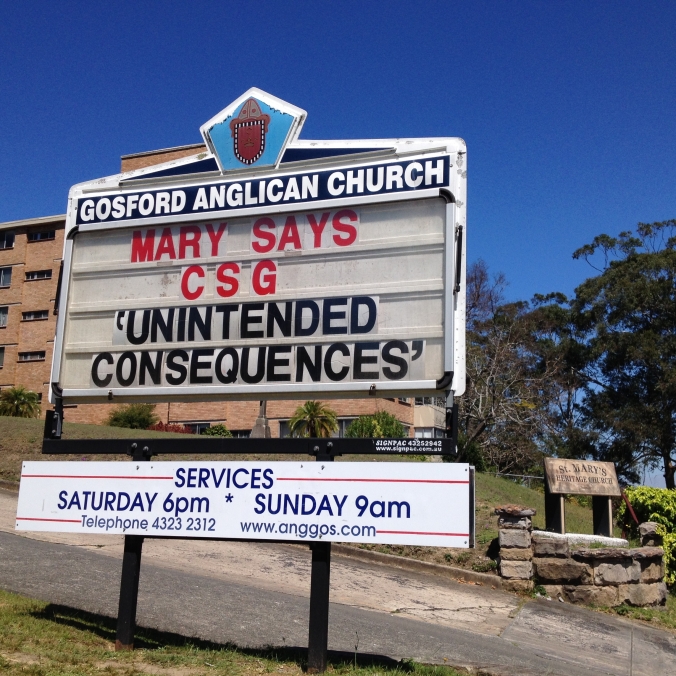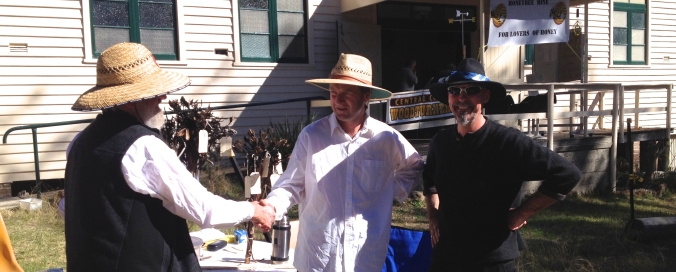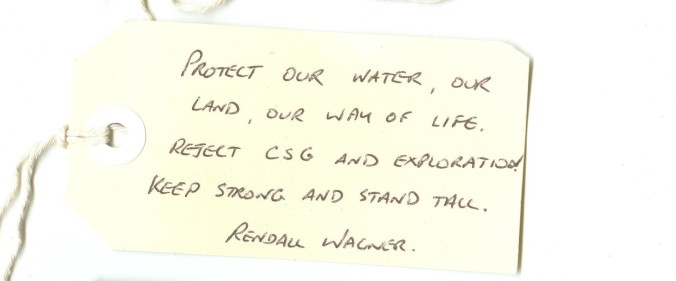As an update to this mention of several of the CSG Committee’s members showing their support to the protests being staged outside the gates of ROCLA; specifically over the proposed changes to the Kulnura Mangrove Mountain Ground Water Sharing Plan, we have been able to source a good summary of what the changes entail and what they mean to the local community. A big shout out to to Ian Sutton, who has been spearheading the protests over the expansion to the ROCLA sand mine, for taking the time to help us understand the water allocation changes.
As previously mentioned, the CSG Subcommittee of the MDA is laser focused on the issue of Coal Seam Gas mining across the Mountain Districts. We do however share with other active community groups a concern over the health and state of the aquifers the current farming and environment across the districts rely upon. Hence we are very proud to have stood with Ian and many others from the community and from groups including Our Land Our Water Our Future, Camp Quoll, and The Greens.
We all recognise that the proposed, draft water allocation rules are a green light to extractive industries (including the CSG industry) to accelerate their destruction of our land and livelihoods. It is important therefore to understand the threat to the aquifers that CSG mining poses in context of the bigger picture.
Over to Ian Sutton:
There are two significant changes being proposed for the Kulnura Mangrove Mountain Ground Water Sharing Plan (KMMGWSP). The first is the removal of the current 8 management zones and amalgamate them into 1 ground water source. As well there will be the removal of the maximum water take limit of 200Ml/year per square km.
The proposed legislative changes will facilitate a free water market on the mountain and allow trading of Water Access Licences (WALs) across current management zones, permitting increased water allocations in any part of the Kulnura Mangrove Mountain Ground Water Source (KMMGWS). This will allow zones that are already fully allocated to become over allocated, while other zones may remain under utilized due to those WALs being exported elsewhere. As well, the proposal to abolish the maximum water take limit will allow corporations, in particular, to come into the KMMGWS and dominate the market.
Recently, in 2013, there were amendments made to the KMMGWSP that saw 6 of the 8 zones decrease their Long-term average annual extraction limit (LTAAEL) due to the need to protect base flows, particularly along Ourimbah Creek. Of the 2 remaining zones, zone 1 had no change due to it being National park, state forest and drinking water catchment that does not allow the extraction of water, and zone 4 which was the only ground water source that increased its LTAAEL.
Of the 7 zones that allow water extraction 5 are shown as fully allocated, this means there are no new Water Access Licences (WALs) being issued within these zones. To prevent over allocation of water from any one water source, trading of WALs must occur within a zone, currently importing WALs from other zones is prohibited. To ensure water sharing is fair and equitable, water allocations are limited to the 200Ml/year per square km.
Of course the winners in this new free market will be the wealthy extractive and mining corporations who can afford to buy up all the WALs at inflated prices, while the losers will be the farmers and local small businesses that rely on an affordable and reliable water source. The extractive and mining industries all provide short term economic gain and if their activities diminish our water resources then the entire Central Coast community will suffer in the long term as water availability decreases and costs increase.
It is estimated that the KMMGWS provides up to 50% of the Central Coast water supply and any mismanagement of this precious resource will impact massively on our local economy. These proposed legislative changes are not being implemented to allow better management of our water resources, but simply to allow free trading of water and the inevitable mismanagement and unsustainable use of this resource.
Since the KMMGWSP commenced in 2004, a University of Technology Sydney study1 has been completed in the plan area. The study indicated that capping entitlements at existing extraction levels in these groundwater sources would protect hydraulic gradients around existing bores that impact on base flows to streams.
These base flows sustain our local environment as well as our local economy and the reduction in environmental flows will impact massively on our regions biodiversity. Wet plant communities will disappear and dry plant communities will dominate and expand their territories. With more gum trees forests and woodlands comes more bush fires and the drying of the landscape will only increase catastrophic fire conditions. With our waterfalls, rain forests and wetlands disappearing, so too will our eco-tourism industry.
The long-term sustainability of our local economy and local ecology both rely on best practices for managing water resources. To date the water resources on the mountain have been grossly mismanaged and much damage has already been done. The community not only need to oppose the proposed changes to the KMMGWSP but also need to demand better policies than currently exist to ensure the future security of our most precious natural resource.
To view water as an economic commodity is a disaster waiting to happen!







